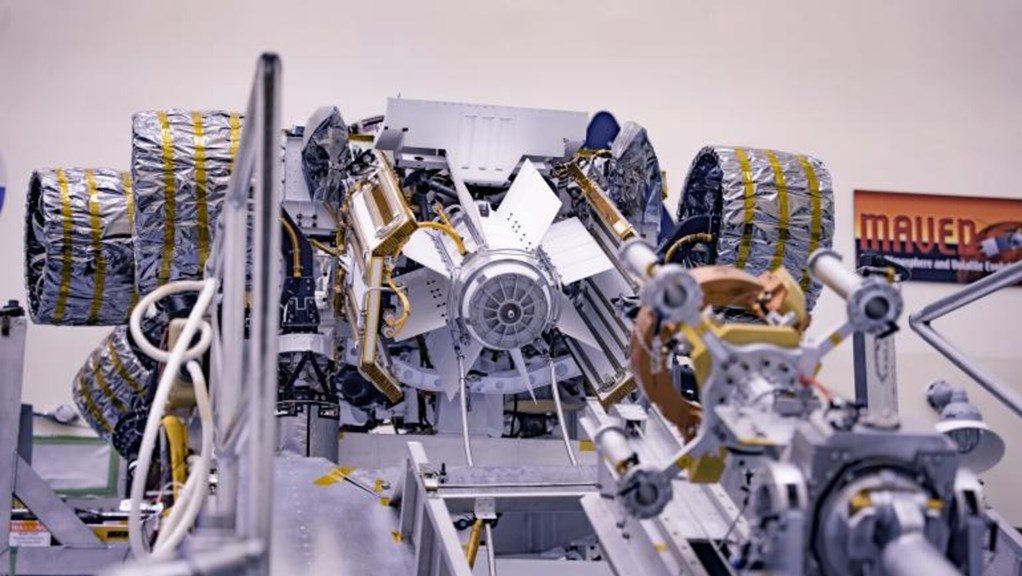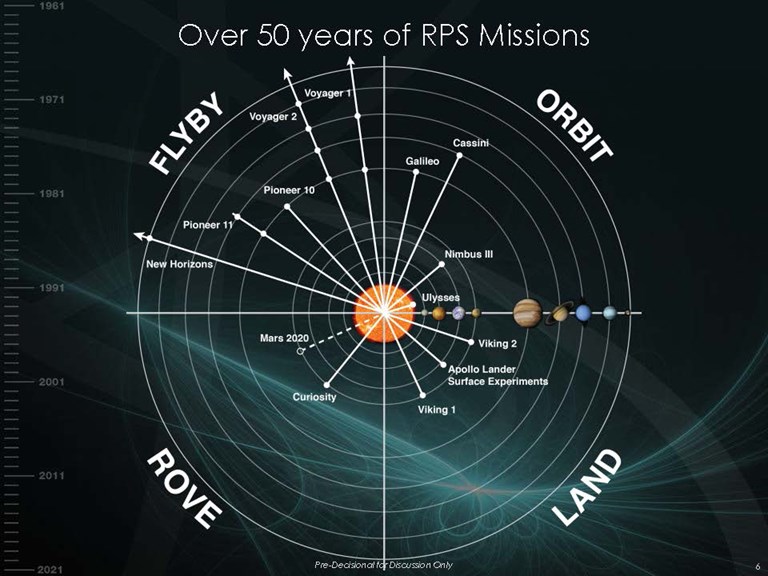Powered by Plutonium
With NASA’s latest Mars rover Perseverance safely on the surface and beginning its exploration, we look at how space probes and rovers are able to function in the hostile conditions of space or on planets when solar power is inadequate or unfeasible.
For the last 50 years a series of space probes, landers and planetary rovers have benefited from the application of the Peltier-Seeback effect. In 1821 German physicist Thomas Seebak and French physicist Jean Peltier discovered the thermoelectric principal behind the thermocouple. An electric current will flow if two dissimilar metals are kept at different temperatures and connected in a circuit. The electricity, the flow of electrons from one metal ‘coupled’ to the other, can be used to generate power. The temperature difference can be achieved in several ways, but one in particular has enabled the exploration of much of the solar system - the radioactive decay of the isotope plutonium 238 which produces heat.
Isotopes of other radioactive elements, such as Polonium, Curium, Strontium, Caesium and Americium, have been used or considered for space probe heating or electricity generation. Key factors include an isotope's power density (how much steady energy it produces over time), size and weight, and its half-life or how many years for half of it to decay (placing a time limit on its usefulness). Isotopes vary but Plutonium 238 which is energy-dense, compact and long-lasting has been the most practical choice so far for extended space missions.
As one metal element is heated by the plutonium’s decay, the second metal which forms the other half of the thermocouple is exposed to space or a colder surface environment. This differential produces the required electricity, and the greater the number of thermocouples linked together the higher the watts or flow of electric current.

Credit: NASA/JPL-Caltech/KSC/DOE
The first use of this technology was in June 1961 for a US Navy Transit satellite or NAVSAT, and the development of this power source has enabled progressively longer distance and longer duration missions ever since.
One application of the heat from radioactive decay is in a Radioisotope Heating Unit (RHU) to warm a spacecraft in the frigid depths of space, or in sub-zero temperatures on a planet, moon or asteroid, to keep vital systems, mechanical operations, and instruments functioning. Multiple units can provide direct heat to its components. Another is in a Radioisotope Thermoelectric Generator (RTG) to provide continuous reliable long-term power for space probes, landers or rovers regardless of sunlight levels, extremes of temperature, radiation, magnetic fields, or dusty surface conditions.
Plutonium does not occur naturally, except in trace quantities in uranium ore, but it can be synthesised in nuclear reactors. It has a half-life of 87 years meaning it can provide heat for many years as it gradually decays. The system will lose a few watts of power every year, but the famous Voyager probes from 1977 are still operating albeit with minimal functions, and New Horizons far out in the Kuiper Belt is expected to last well into the 2040s.
The US Los Alamos National Laboratory produces ceramic pellets of 238 Plutonium Dioxide for the US Department of Energy’s clients which develop and manufacture these power units for industry and research, which in turn supply NASA with their “nuclear batteries” for space missions. There have been concerns that the isotope resource will not be available for future space missions, but supply appears to be adequate, at least for the time being.
This short video from the US Department of Energy and Idaho National Laboratory looks into radioisotope thermoelectric generation and how Perseverance's RTG power unit was made ready for Mars.
Plutonium has the lowest shielding requirement for space missions (and sometimes none is even necessary) which helps in terms of weight and size when designing a probe, lander or rover. Over decades the technology has improved so that successive versions of heating or power units have been able to deliver greater longevity and output. With multiple thermocouple elements connecting to sealed units of plutonium dioxide, power levels can be high enough for quite sophisticated craft. These Multi-Mission RTG’s (MMRTG) support the latest missions. For example, rovers like Curiosity and Perseverance can keep warm and carry out complex tasks such as driving across terrain, turning instrument booms, operating cameras, firing lasers and drilling rocks, scooping samples, using on-board laboratories and analysers, controlling actuators, recharging internal batteries, running data processing and diagnostics, and communicating with orbiters or mission control on Earth.
Space probes or missions that have used either a RHU heating unit or RPG power unit have included Pioneers 10 & 11, Apollos 12 & 14-17 Lunar Surface Experiments, Vikings 1 & 2, Galileo at Jupiter, Cassini at Saturn, ESA Huygens probe to Titan, New Horizons to Pluto and the Kuiper Belt, NASA/ESA Ulysses heliosphere probe, Mars rovers Pathfinder, Spirit, Opportunity, Curiosity and now Perseverance. NASA’s planned Dragonfly rotorcraft mission to Titan slated for 2027 will also be RPG-powered.
